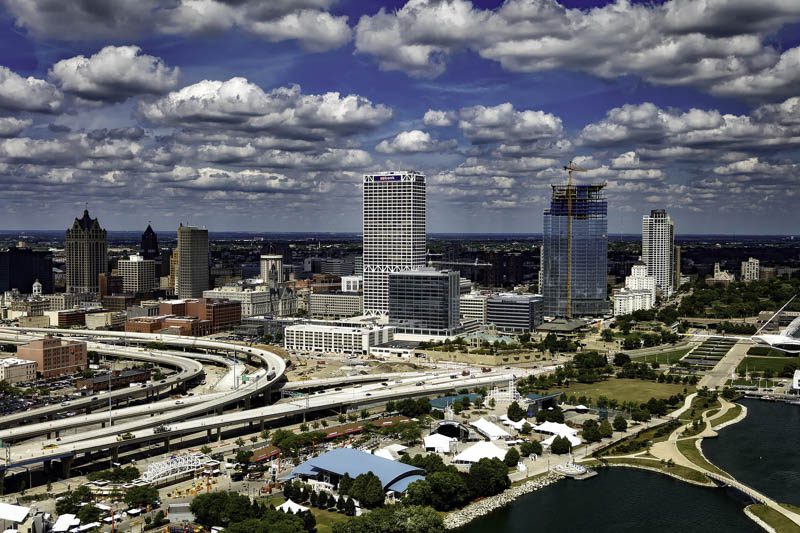Home » Cost Guides » Wisconsin Cost Guides » How Much Does it Cost to Build a House in Milwaukee?
Nicknamed “Brew City,” Milwaukee is said to be the beer capital of the world. Lake Michigan played a big role in establishing Milwaukee’s title as it made the transport of beer to Chicago a lot easier. The city is also known for its ethnically diverse communities. With more than a hundred festivals year-round, Milwaukee is also dubbed the “City of Festivals.” One can expect to find all sorts of celebrations: from the Wisconsin State Fair, to the commemoration of different cultural heritages, to various sporting events.
This year, Milwaukee welcomed more than 10,000 new residents into the area, most of whom were from big cities. The city offers a great urban work-life balance that people prefer, including the short commute time, affordable neighborhoods and lower cost of living compared to other parts of the country. A little more than two-fifths of the city is reserved for residential construction, and around 89% of that area is used by freestanding duplex and single-family homes. According to Norada Real Estate Investments’ Milwaukee 2021-2022 forecast, Downtown Milwaukee is attracting more college students seeking employment, and over the past 12 months, the city’s appreciation rate is up to 9.45%.
Given all this information on what the city has to offer, prospective homeowners have one question: how much does it cost to build a house in Milwaukee?

The Cost of Building a Custom Home in Milwaukee
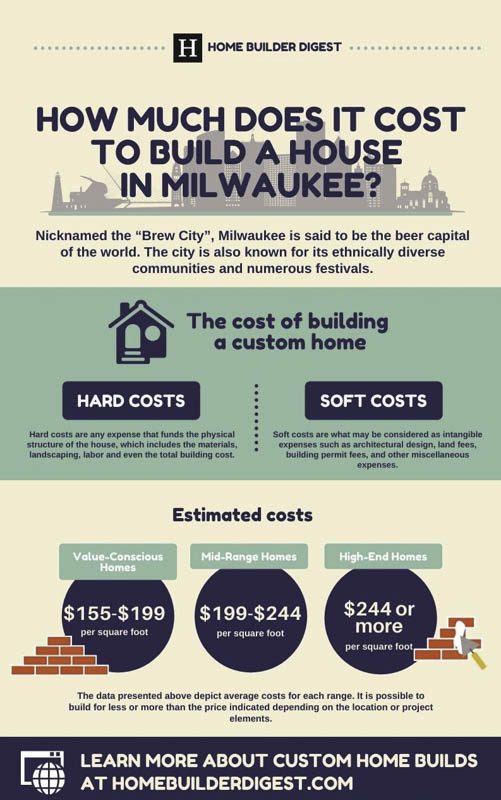
In Wisconsin, median prices for single family homes rose to $245,000 or 7.5% from October 2020 to October 2021. The statewide average for a home to be on the market is 68 days, which can be attributed to the current supply chain issues, labor shortage, and increasing energy prices. The housing market in Milwaukee is somewhat more competitive, with homes selling within an average of 50 days at about 5% higher than the list price. However, Milwaukee’s median house price is roughly 54% lower than the national median at $174,900. Although prices in the area are more affordable compared to other metropolitan cities, Milwaukee prices are still following an upward trend, with this year’s prices 6.1% higher than the prices in 2020.
The cost of a new home varies with the labor and resources needed to construct it. Building a home requires a lot of different costs such as architecture and design fees, permit fees, land fees, and other custom features. Building from the ground up also includes details such as framing, foundation, plumbing, roofing, and flooring. When building a home, all of the costs can be split up into soft costs and hard costs.
Hard Costs
Get a free cost estimate
Hard costs are any expenses that fund the physical structure of the house, including the materials, landscaping, labor, and the total building cost. Estimates from Sugar Creek Homes place the cost of building a custom home in Milwaukee somewhere between $350,000 and $550,000. If the project is kept within the city’s average property size of 2,250 square feet, then the value per square foot can go anywhere between $155 and $244.

Figure 1. Typical cost breakdown of a single-family home constructed using the conventional method, according to Home Builder Digest.
Sugar Creek Homes place the cost of construction materials at around $100,000, most of which are fluid in prices depending on the supply and demand. As for excavation and foundation work, it can cost around $12,000 and $29,000, respectively. Electricity, heating, insulation, and plumbing can cost around $65,000, while exterior, which includes gutters and landscaping, is at least $8,000. The exterior costs can go up depending on the modifications needed such as removing trees or installing new flower beds. Labor and contractor fees vary per builder, but generally, contractors charge about $45,000, which includes the labor fees for construction such as framing, roofing installation, painting, and others. As for the general contractor, fees are around 8.5% to 15% of the total building cost.
Depending on the size and material, metal roofing for Milwaukee may range somewhere between $6,900 and $37,500. Metal roofing may cost around $6.90 to $10.70 per square foot, while a 1,500-square-foot, basic standing seam type can cost $13,250. Lumber and labor costs all over the country rose this year, breaking record levels. Supply lines were having problems with manpower and facilities, making lumber go up to $1.33 per board foot around April this year.
Soft Costs
Get a free cost estimate
Soft costs are the intangible expenses that go to and beyond the construction of the home, such as architectural design, land development fees, building permit fees, engineering fees, and other miscellaneous expenses.
Cost of the Land
Choosing the best lot for your home is one of the first steps in constructing your new home. Prices may vary due to several factors such as proximity from metropolitan areas, view, amenities, land topography and current development status. The city of Milwaukee has over 22,000 hectares of land reserved for residential use, and 67% is used for single family dwellings. Zillow places the average cost of land at $118,344.00. The average size of land for that median is 15,664.21 square feet, which includes both developed and underdeveloped lots that may need extra work. Sugar Creek Homes indicates that the median lot size for residential construction is around 8,900 square feet, and a prospective buyer may spend anywhere from $25,000 to $150,000 or more.
Permits and Other Fees
All permits pertaining to home construction shall be filed at the Permit and Development Center, Department of Neighborhood Services. Each permit has a $10 processing fee, and may require a licensed contractor depending on the project. Plan review and permit costs for new single family constructions are as follows:
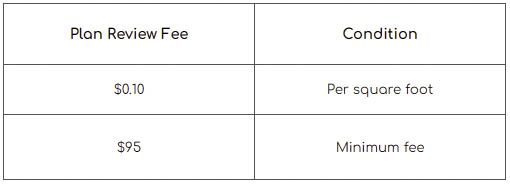
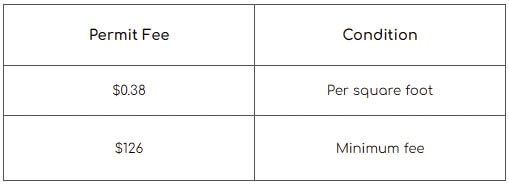
For new construction, fees are calculated using the total gross floor area of the home, including all principal floors, attics, exterior porches, basements, decks and platforms.
Architecture and Design Fees
Architects price their projects depending on the size of the project, scope, complexity, and the needs or lifestyle of the client. Designs may be simple and straightforward, while some may require extensive research and attention to detail. Racinowski Design Studios say that design and architectural fees for residential construction usually range from 7% to 15%, and it varies per home. The Milwaukee City Government offers a new home catalogue of traditional house designs. The plans are free upon purchase of a vacant, city-owned lot, with the exception of $1 lots, to which the lot owner may purchase the complete plans and construction design documents for $500. The houses are designed to promote energy efficiency and sustainability.

How do the custom home building costs in Milwaukee compare to other nearby cities?
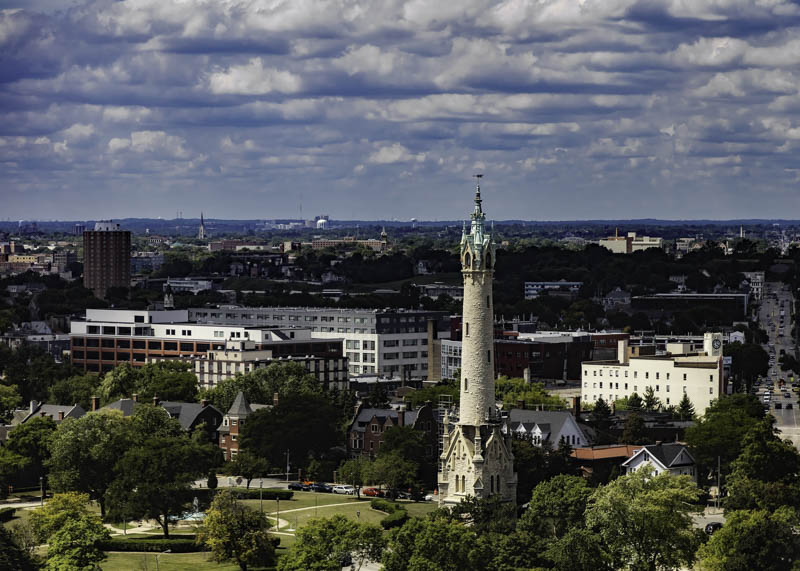
For Milwaukee, Redfin indicates that the sale price for homes is around $179,000, which is 11.6% higher than the previous year. Homes usually stay on the market for around 50 days before it gets sold, and some get bought at 5% higher than the list price. As of October 2021, Milwaukee has become a seller’s market, meaning that the number of people looking to purchase is higher than the number of homes currently in the market. Similar to the Milwaukee city government, contractors in the area offer floor plans for lot owners. One of these is Bielinski Homes. They offer several home designs like ranch, and some with two stories. For example, their lowest-priced design plan for a ranch home is $300,490 for 1,880 square feet, or around $159 per square foot. Their most expensive design for the same type is $432,490 for 2,200 square feet, which is closer to the current average housing size in the city. This is approximately $196 per square foot. Compared to the following cities, and using data from Realtor and Redfin, Milwaukee’s pricing lies in the middle.
Racine
As of October this year, Racine was trending at 6.3% year-over-year, with homes selling at an average of $176,000. With a median price of $169,900, the cost of a home per square foot was at $126. Middle-tier homes sell for their listing price in about 44 days, while in demand homes can sell at 4% more than the listing price in about 30 days.
Waukesha
In Waukesha, homes listed at $309,000 sell for about $295,000. Home prices are trending up at 10.4% year-over-year, and as of October 2021, the price per square foot was at $169. Average homes may sell at 2% more than the listing price in approximately 43 days, while in demand homes can sell within 33 days at 5% higher than the listing.
What Leading Custom Home Builders and Architects that Serve the Milwaukee Area Say
Get a free cost estimate
To elaborate more on the housing market, we reached out to home builders and architects that serve Milwaukee to obtain in-depth information regarding the current costs of residential construction.
Aaron Hoffmans of Hoffmans Architecture describes how half of their projects in the previous year went over budget, and he foresees this happening for the next year or two. Construction costs are difficult to estimate, and estimating it per square foot is problematic for custom builds. Hoffmans adds that customization equates to a higher cost whereas standardized materials and dimensions adds value but reduces customization. His job as an architect is to appropriately balance customized solution with standardized construction materials and methods. Since each project is unique the balance changes and ultimately affects cost.
Hoffmans’s fees for new projects range from $10,000 to $60,000; this includes structural engineering. He notes that the estimates are not based on home size and construction cost, but rather on the services the customer may require for completion.
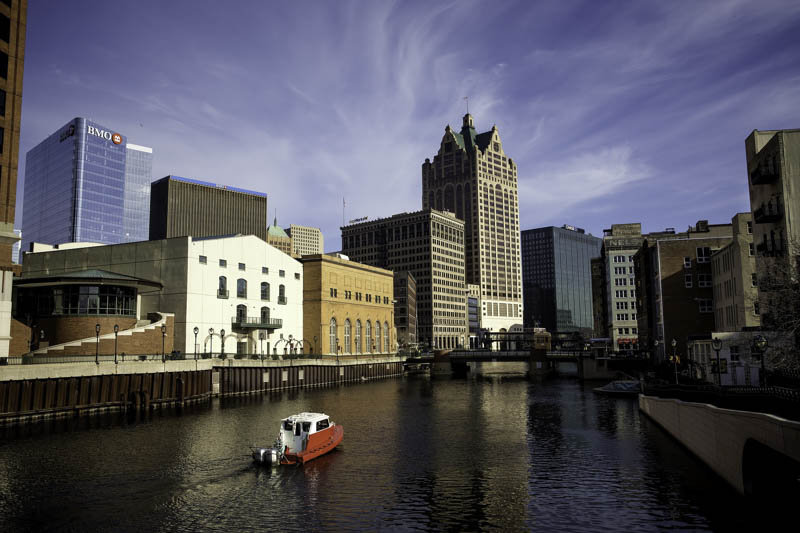
Justin Racinowski, principal of Racinowski Design Studio, shares how every project has its own scope and complexity, which makes it difficult to give an average. For architects, they use percentage to compute the fees based on the cost of construction, which can range from 7% to 15%. Contractors with their own designers may charge less for the process but the fees are typically placed into their construction budget.
Racinowski also shares how there is currently a lot of uncertainty with the industry due to fluctuating costs, material availability and labor shortages. People working remotely need additional space at home, which in turn fuels the high demand for construction projects. People are hoping that the industry will be more secure by 2022, with the prospect of decreased COVID-related labor shortage and re-stabilized material production. Racinowski believes that it will be a slow recovery process, and people planning to build should have more patience and a bit more financial flexibility. Starting the process early will be an advantage due to the expected waiting list with designers and builders.
Galbraith Carnahan Architects does custom architecture and design for homes mainly on the high-end and unique side. When it comes to pricing projects, they take a look at the total construction cost, the time and energy it may require, and lastly, the size and complexity of the home. A small project, or somewhere between $600,000 and $700,000, may charge around 12% of the total construction cost. A middle tier property priced at $1-2,000,000 charges around 10% of the costs, while a project worth more than $2,000,000 may charge 8%. It should be noted, however, that the increase in construction cost does not necessarily mean that it takes more time to complete.
The firm’s Director of Design, Nick Carnahan, comments on the cost inflation seen recently with lumber earlier this year, with steel also reaching a similar state. Mortenson’s Construction Cost Index for Milwaukee as of this year’s third quarter shows how components such as steel pipes and structural steel, increased by at least 6%, affects construction costs. While it takes around $300 or more per square foot to create a nice custom home, the total cost will still depend on the size and unique features that the client wants. Projects have also been heavily affected by procurement schedules, which as of late can reach a year out. Carnahan advises future homeowners to send in their orders 12 to 18 months in advance because of the supply chain issue felt all over the country. Doing this may help avoid turbulence during the actual construction process.

Richard Sherer, founder and CEO of Deep River Partners discusses how professional fees are calculated. For starters, these costs are based on a variety of services, including architecture, interior design, landscape design, and specialty consultants such as lighting, civil engineering, Heating/Ventilation/Air Conditioning (HVAC), and structural engineering. Other than those, it also depends on the size and complexity of the project, so it will be easier to calculate costs if the ideal concept is clear and specific. The fees can either be a flat fee, or a percentage of the construction cost. As for hourly rates, it may range anywhere from $75 to $300 based on the educational background, credentials and professional experience. After identifying the project scope, it is recommended the owner and design professional put the professional services agreement on paper, as proper documentation reduces risk and ensures that the project will be a positive experience for everyone involved.
Sherer believes that the marketplace for professional services is strong, and even intensified with the desire to improve one’s lifestyle, which can be seen in the increasing project complexities. Similar to what was already mentioned, the current supply chain issues and decline of quality craftsmanship due to labor shortage are making it more difficult to build and address expectations. As the cost of construction continues to rise, well-executed documents are used by professionals for competitive bidding. This allows the future homeowner to get the best value in the marketplace.

The Future of Milwaukee’s Residential Construction Industry
Realtor recently released their 2022 Housing Market Predictions and Forecast where they highlighted that the suburbs will be popular due to affordability. With companies shifting temporarily to remote work due to the pandemic, the transition has opened the possibility of working in a fully remote environment. While some workers are being called to work back onsite, others have given their employees the flexibility of working at home. According to the same report, the Milwaukee Metropolitan area housing market will have a year-on-year sales growth of about 10.5%. In a report by the Wisconsin Department of Revenue, they are expecting employment in the state to grow by 3.6% in 2022, and pre-pandemic levels by midyear.
As of September, the Greater Milwaukee Association of Realtors (GMAR), metropolitan Milwaukee has outperformed the 2020 housing market for the sixth month in a row. The low inventory for the past two years was one of the contributing factors, with the lack of new construction for single family homes alongside the overproduction of apartments. GMAR also added that if people continue to forego building homes, then thousands of prospective homeowners will have to rent and be kept away from the possible advantages of homeownership. If the trend continues, then metropolitan Milwaukee will still be a seller’s market in 2022.
Considering building a home in Milwaukee?
Contact us for a free consultation

